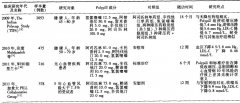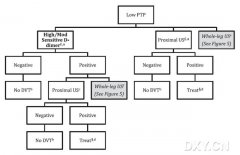读医学网
2011年美国AHA颅外动脉狭窄治疗指南
发布时间:2014-05-19 10:34 类别:神经系统疾病 标签:studies choice influence preference 来源:丁香园
It is essential that the medical profession play a central role in critically evaluating the evidence related to drugs, devices, and procedures for the detection, management, or prevention of disease. Properly applied, rigorous, expert analysis of the available data documenting absolute and relative benefits and risks of these therapies and procedures can improve the effectiveness of care, optimize patient outcomes, and favorably affect the cost of care by focusing resources on the most effective strategies. One important use of such data is the production of clinical practice guidelines that, in turn, can provide a foundation for a variety of other applications such as performance measures, appropriate use criteria, clinical decision support tools, and quality improvement tools.
The American College of Cardiology Foundation (ACCF) and the American Heart Association (AHA) have jointly engaged in the production of guidelines in the area of cardiovascular disease since 1980. The ACCF/AHA Task Force on Practice Guidelines (Task Force) is charged with developing, updating, and revising practice guidelines for cardiovascular diseases and procedures, and the Task Force directs and oversees this effort. Writing committees are charged with assessing the evidence as an independent group of authors to develop, update, or revise recommendations for clinical practice.
Experts in the subject under consideration have been selected from both organizations to examine subject-specific data and write guidelines in partnership with representatives from other medical practitioner and specialty groups. Writing committees are specifically charged to perform a formal literature review; weigh the strength of evidence for or against particular tests, treatments, or procedures; and include estimates of expected health outcomes where data exist. Patient-specific modifiers, comorbidities, and issues of patient preference that may influence the choice of tests or therapies are considered. When available, information from studies on cost is considered, but data on efficacy and clinical outcomes constitute the primary basis for recommendations in these guidelines.
In analyzing the data and developing the recommendations and supporting text, the writing committee used evidencebased methodologies developed by the Task Force that are described elsewhere. The committee reviewed and ranked evidence supporting current recommendations with the weight of evidence ranked as Level A if the data were derived from multiple randomized clinical trials or meta-analyses.
The committee ranked available evidence as Level B when data were derived from a single randomized trial or nonrandomized studies. Evidence was ranked as Level C when the primary source of the recommendation was consensus opinion, case studies, or standard of care. In the narrative portions of these guidelines, evidence is generally presented in chronological order of development. Studies are identified as observational, retrospective, prospective, or randomized when appropriate. For certain conditions for which inadequate data are available, recommendations are based on expert consensus and clinical experience and ranked as Level C. An example is the use of penicillin for pneumococcal pneumonia, for which there are no randomized trials and treatment is based on clinical experience. When recommendations at Level C are supported by historical clinical data, appropriate references (including clinical reviews) are cited if available. For issues where sparse data are available, a survey of current practice among the clinicians on the writing committee was the basis for Level C recommendations, and no references are cited. The schema for Classification of Recommendations and Level of Evidence is summarized in Table 1, which also illustrates how the grading system provides an estimate of the size and the certainty of the treatment effect.
A new addition to the ACCF/AHA methodology is a separation of the Class III recommendations to delineate whether the recommendation is determined to be of “no benefit” or associated with “harm” to the patient. In addition, in view of the increasing number of comparative effectiveness studies, comparator verbs and suggested phrases for writing recommendations for the comparative effectiveness of one treatment/strategy with respect to another for Class of Recommendation I and IIa, Level of Evidence A or B only have been added. The Task Force makes every effort to avoid actual, potential, or perceived conflicts of interest that may arise as a result of relationships with industry or other entities (RWI) among the writing committee. Specifically, all members of the writing committee, as well as peer reviewers of the document, are asked to disclose all current relationships and those 24 months before initiation of the writing effort that may be perceived as relevant. All guideline recommendations require a confidential vote by the writing committee and must be approved by a consensus of the members voting. Any writing committee member who develops a new RWI during his or her tenure is required to notify guideline staff in writing. These statements are reviewed by the Task Force and all members during each conference call and/or meeting of the writing committee and are updated as changes occur. For detailed information about guideline policies and procedures, please refer to the ACCF/AHA methodology and policies manual. Authors’ and peer reviewers’ RWI pertinent to this guideline are disclosed in Appendixes 1 and 2, respectively.Disclosure information for the ACCF/AHA Task Force on Practice Guidelines is also available online at http://www.cardiosource.org/ACC/About-ACC/Leadership/Guidelines-and-Documents-Task-Forces.aspx. The work of the writing committee was supported exclusively by the ACCF and AHA (and the other partnering organizations) without commercial support. Writing committee members volunteered their time for this effort.
The ACCF/AHA practice guidelines address patient populations (and healthcare providers) residing in North America. As such, drugs that are currently unavailable in North America are discussed in the text without a specific class of recommendation. For studies performed in large numbers of subjects outside of North America, each writing committee reviews the potential impact of different practice patterns and patient populations on the treatment effect and the relevance to the ACCF/AHA target population to determine whether the findings should inform a specific recommendation.
The ACCF/AHA practice guidelines are intended to assist healthcare providers in clinical decision making by describing a range of generally acceptable approaches for the diagnosis, management, and prevention of specific diseases or conditions. These practice guidelines represent a consensus of expert opinion after a thorough review of the available current scientific evidence and are intended to improve patient care. The guidelines attempt to define practices that meet the needs of most patients in most circumstances. The ultimate judgment regarding care of a particular patient must be made by the healthcare provider and patient in light of all the circumstances presented by that patient. Thus, there are situations in which deviations from these guidelines may be appropriate. Clinical decision making should consider the quality and availability of expertise in the area where care is provided. When these guidelines are used as the basis for regulatory or payer decisions, the goal should be improvement in quality of care. The Task Force recognizes that situations arise for which additional data are needed to better inform patient care; these areas will be identified within each respective guideline when appropriate.
Prescribed courses of treatment in accordance with these recommendations are effective only if they are followed. Because lack of patient understanding and adherence may adversely affect outcomes, physicians and other healthcare providers should make every effort to engage the patient’s active participation in prescribed medical regimens and lifestyles.
The guidelines will be reviewed annually by the Task Force and considered current unless they are updated, revised, or withdrawn from distribution. The executive summary and recommendations are published in the Journal of the American College of Cardiology, Circulation, Stroke, Catheterization and Cardiovascular Interventions, the Journal of Cardiovascular Computed Tomography, the Journal of NeuroInterventional Surgery, and Vascular Medicine.




